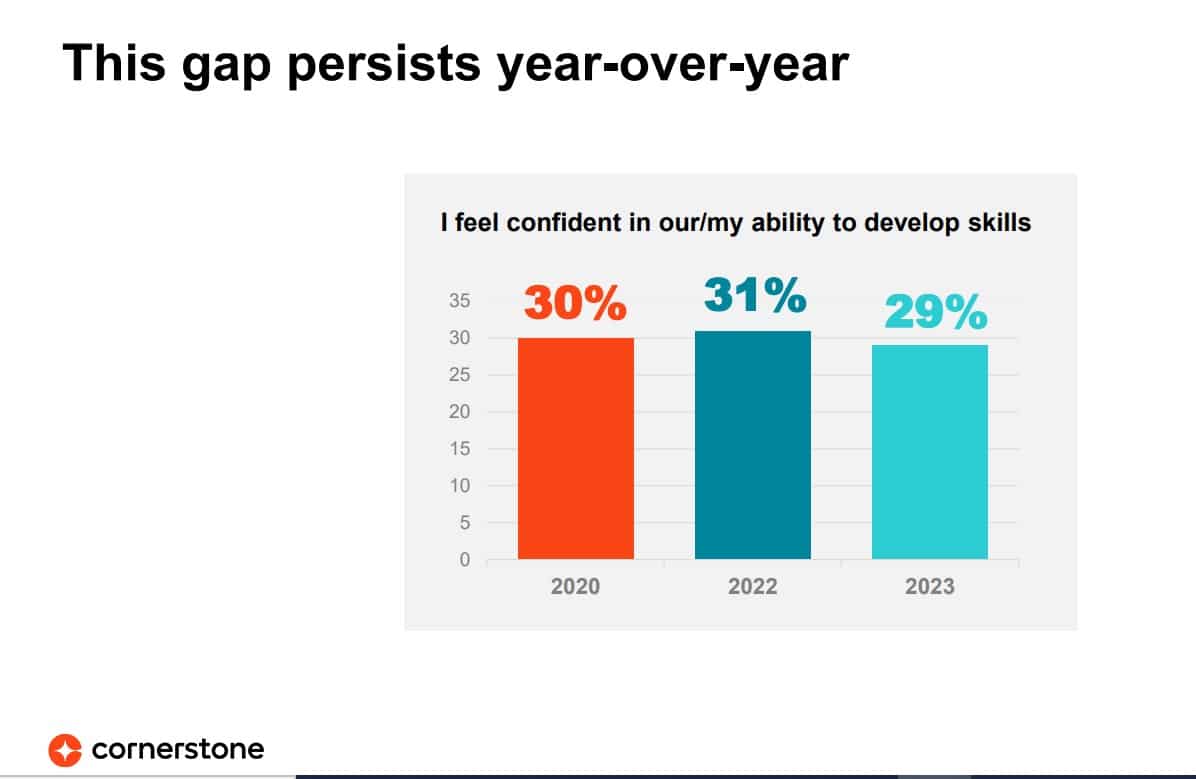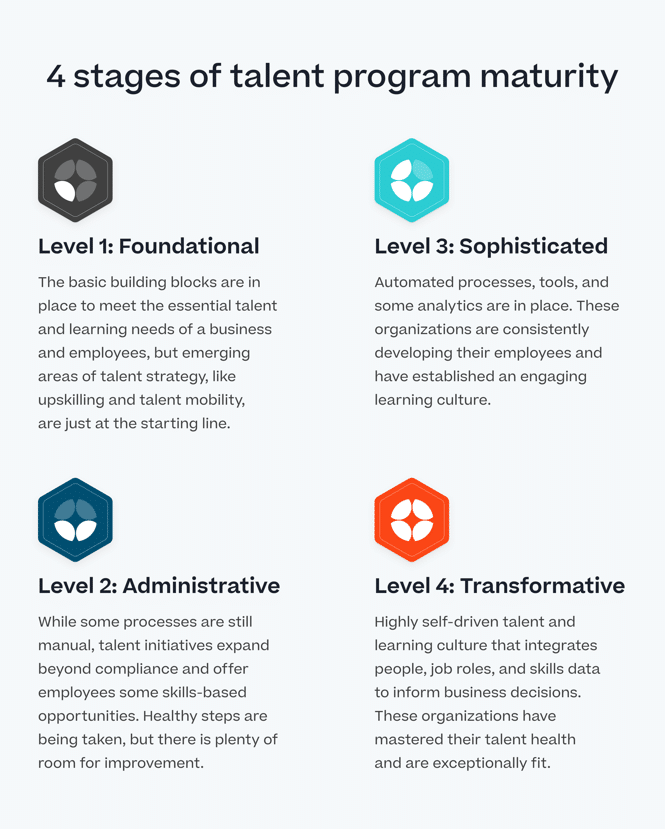Time for a learning and development reality check.
Nearly 90% of employers believe they are providing their workforce with the training to grow and develop their professional skills, but only 60% of employees agree that that’s the case. That gap is not a fluke—it’s been an ongoing reality for the past three years, according to a report released this week by Cornerstone OnDemand, an AI-powered learning and development platform provider.
This disconnect can hurt the organization because of lost opportunity. For example, companies that provide the right mix of learning and development for individual career growth and the future of the business tend to be high-performing organizations with engaged employees, says Josh Bersin, founder and CEO of The Josh Bersin Co, in a previous HRE column.
The Cornerstone research supports this, finding a gap of just 6 percentage points in employer and employee perspectives on skills preparedness at high-performing companies, versus the 30-point spread at others. The report surveyed more than 2,100 talent and business leaders and employees across the globe.
Despite the benefits L&D can bring to an organization, particularly when it comes to employee experience, this wide perception gap has persisted for several years. In both 2022 and 2023, the top three L&D requests from employees were more skills development content, coaching and mentoring opportunities, and comprehensive career guidance.

HR leaders may wonder why this problem persists.

In many cases, employers invest in a single initiative, like implementing a learning management system or creating a job board for employees to find openings on their own time. And then they consider the L&D box checked, says Mike Bollinger, global vice president of strategic initiatives at Cornerstone OnDemand.
As with any organizational problem, HR must first be aware that it exists before finding a solution.
“The average organization is likely not even aware of the opportunities they are missing to improve their talent program,” Bollinger tells HRE.
How to narrow the skills perception gap
Employers can use high-performing organizations as a guide to reduce the skills perception gap, following their lead to invest in broad initiatives that cover all seven dimensions of healthy talent programs, Bollinger says. They are:
Culture and technology
In high-performing organizations, a culture of knowledge sharing and the use of up-to-date HR and talent technologies are leveraged to move the business forward. It turns out that 85% of such organizations invest more in personalized and in-the-flow-of-work learning technology, Bollinger says.
Skills strategy
Identify skills employees have and the ones the business needs across the organization. Then proactively transform the business into a skills marketplace for workforce planning.
Learning and development
Expand traditional learning programs to embed that focus on skills: Don’t only address the company’s current skills needs, but also its future needs—which can improve workforce agility. Also, ensure L&D programs can help employees with their personal development journeys.
Content strategy
Allow employees to self-curate learning content that is regularly updated and tied to business challenges, Bollinger says. Employees can then educate the rest of the organization.
Performance management
With this focus, employees have full visibility and transparency of performance goals, metrics and results, with HR reviewing data to spot trends and biases.
Talent mobility
Employees should have access to open positions, projects and gigs, in addition to information on job requirements and skills needed to obtain mobility within the organization. Bollinger notes, however, that 89% of high-performing organizations not only build internal knowledge networks so their employees can maximize opportunities to grow inside the company, but they also create external knowledge networks to fuel growth outside of the organization.
Talent reporting, data and analytics
Employers can use centralized reports, visual dashboards and a dedicated HR analytics team, but they also should actively use the data generated to create their people and business strategies, as well as turn to predictive analytics to forecast future business needs.
Assessing employers on skills
Cornerstone also launched its 2023 Talent Health Index on Tuesday, which measures an organization’s maturity level based on employees’ skills development, using four levels: foundational, administrative, sophisticated and transformative.
The report found the average employer scored 88.1 points on the Talent Health Index, putting them at the administrative level. Employers at this level expand beyond the foundational level’s ad hoc talent-building programs that are largely compliance-based by also offering some skill-building opportunities.

The U.S. average score stood at 91, slightly higher than the global average, ranking in the sophisticated level, similar to India, which averaged 92.8.
“As with many new programs and initiatives, resources and budget can always be a challenge,” Bollinger says. “But what we found with this report is that organizations should do everything they can to make room for improved talent initiatives if they want to operate at the same level as high-performing organizations.”

